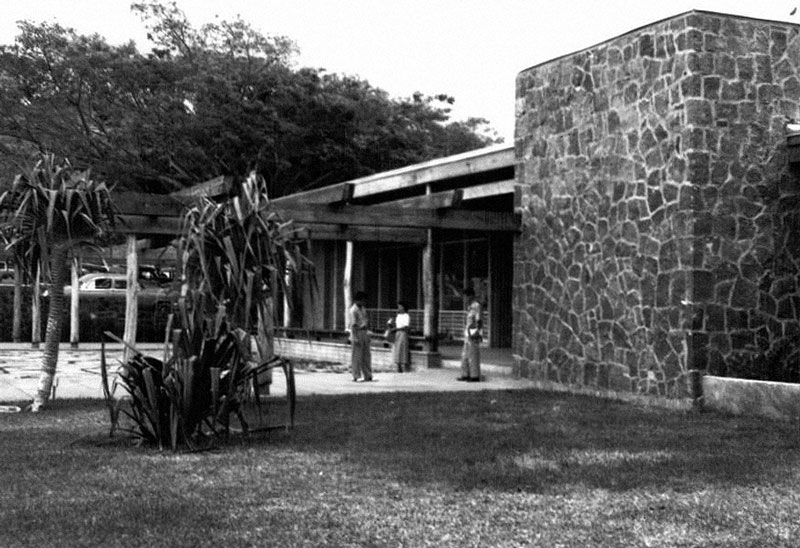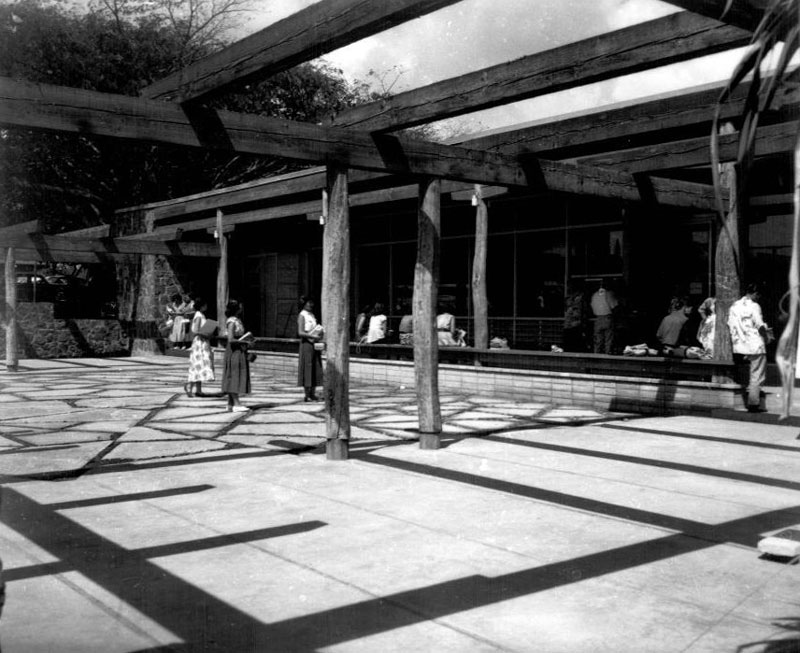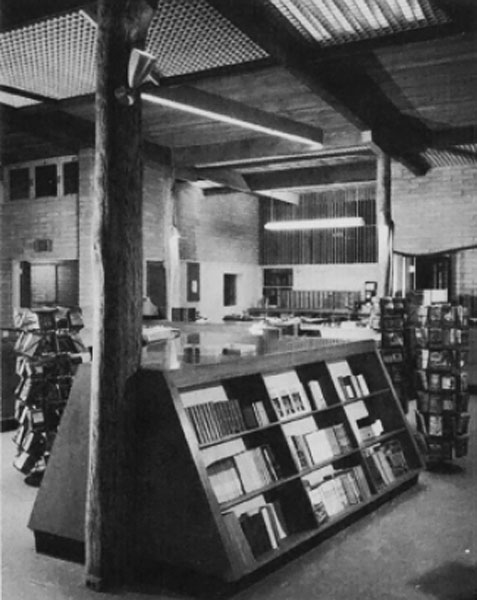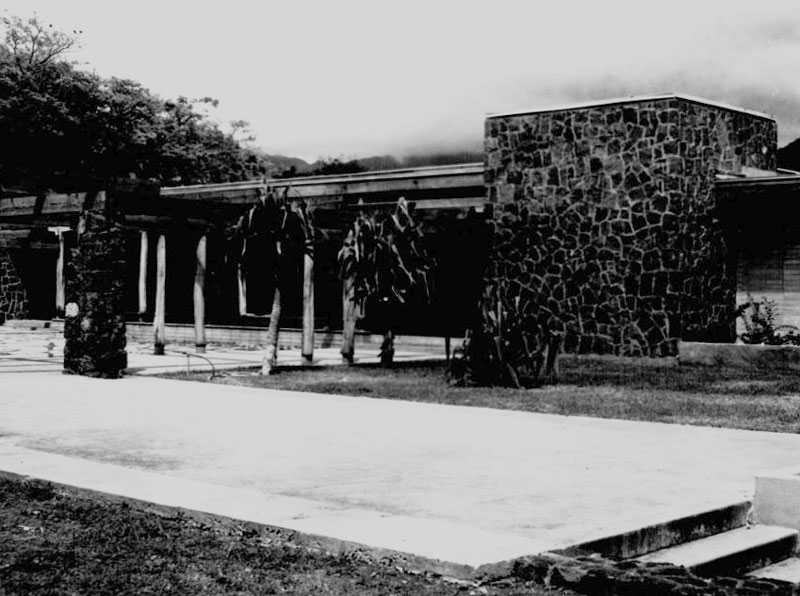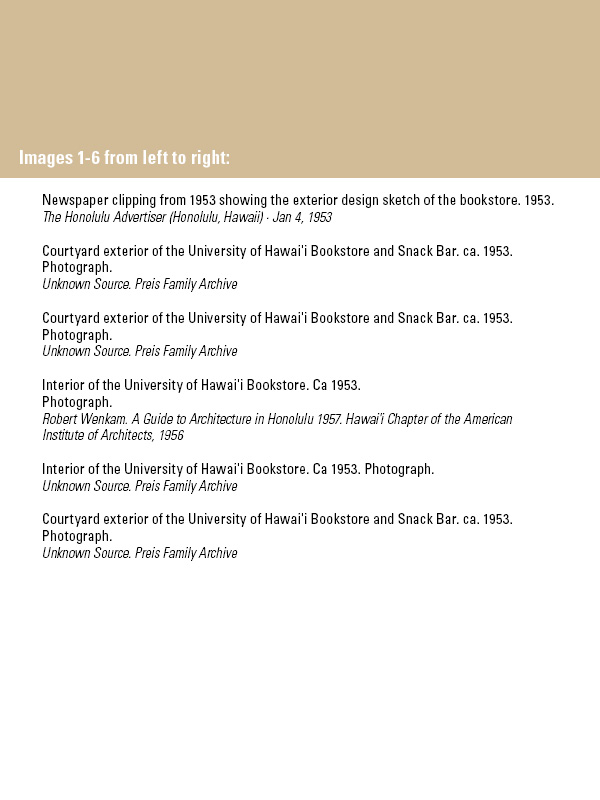Alfred Preis
University of Hawai’i Bookstore and Snack Bar (1952)In a new bookstore for the University of Hawai‘i at Mānoa, Preis drew on the regionalist ideas he developed first at Laupāhoehoe School and were implementing concurrently in the First Methodist Church. The bookstore stood not far from the University Administration Building that Preis had designed with Vladimir Ossipoff several years earlier. But the buildings contrasted significantly. In just a few short years between the completion of the Administration Building and the construction of the bookstore, Preis’s own ideas for regionalist modernism had grown. The bookstore was to become a marriage of the regional and the modern. It was designed along highly functional lines in order to facilitate the distribution of books from their arrival to their sale. Preis combined this modern functionalism with a selection of local materials for the structure, most especially prominent displays of volcanic rock and ʻōhiʻa tree trunks. Rough masonry accent walls formed angled, planar walls, and these were combined with plate glass and concrete.
In the forecourt, he created a gridded wooden pergola above the open outdoor courtyard with views of the sky. This made a social gathering space that seemed simultaneously inside and outside in order for students to take advantage of the warm and sunny climate. The ʻōhiʻa columns supporting the grid were left in a rougher, more natural state and the irregularly cut paving stones contrasted with the otherwise rectilinear lines of the structure. This contrast between the roughness of the wood and stones and the modern functionality of the store partly evoked Japanese Edo period teahouse and temple design, with their balances between rusticity and refinement. In this way, the bookstore merged Eastern and Western influences with Hawaii’s local materials.


